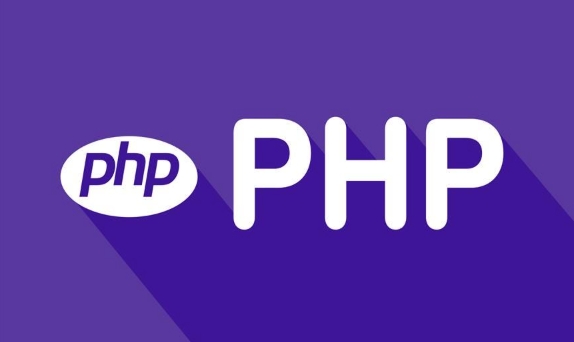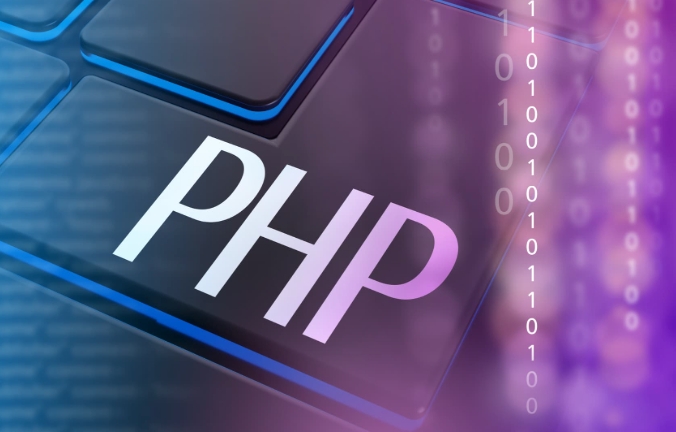To connect a PHP framework to MySQL, first set up the database with tools like phpMyAdmin or the command line by creating a database and user with proper privileges. Next, update the framework’s configuration file—like .env in Laravel, database.php in CodeIgniter, or doctrine.yaml in Symfony—with the correct host, database name, username, password, and port. Then test the connection using built-in commands such as php artisan migrate in Laravel or a simple query in CodeIgniter. Finally, use ORMs or query builders like Eloquent, Doctrine, or CodeIgniter’s own builder to interact with the database safely and efficiently instead of writing raw SQL.

Connecting a PHP framework to a MySQL database is a common task when building web applications. Whether you're using Laravel, Symfony, CodeIgniter, or another PHP framework, the general approach is pretty similar — it’s just a matter of where and how you set things up.

Here’s how to do it without overcomplicating things.

Set Up Your Database First
Before connecting your framework, make sure your MySQL database is ready. You can use tools like phpMyAdmin, MySQL Workbench, or just the command line.
-
Create a database:

CREATE DATABASE my_app;
Create a user and grant access (optional but recommended):
CREATE USER 'app_user'@'localhost' IDENTIFIED BY 'securepassword'; GRANT ALL PRIVILEGES ON my_app.* TO 'app_user'@'localhost'; FLUSH PRIVILEGES;
Once that’s done, you’re good to move on to configuring your framework.
Update the Database Configuration File
Most PHP frameworks have a configuration file specifically for database settings. The exact name and location vary by framework:
- Laravel:
.envandconfig/database.php - CodeIgniter:
application/config/database.php - Symfony:
.envorconfig/packages/doctrine.yaml
You’ll typically need to provide:
- Host (usually
localhost) - Database name
- Username
- Password
- Port (often optional, defaults to 3306)
For example, in Laravel's .env file:
DB_CONNECTION=mysql DB_HOST=localhost DB_PORT=3306 DB_DATABASE=my_app DB_USERNAME=app_user DB_PASSWORD=securepassword
Make sure there are no typos — especially in the username and password fields. A single mistake here will cause connection errors.
Test the Connection
Most frameworks come with a way to test if the database is connected properly.
In Laravel, you can run:
php artisan migrate
If the tables start creating, you’re connected.
In CodeIgniter, create a simple controller method:
public function test_db() {
$query = $this->db->query('SELECT 1');
echo "Connected!";
}If you get an error, double-check:
- Your credentials in the config file
- Whether MySQL is running
- If the user has correct permissions
Sometimes restarting Apache or PHP-FPM helps too.
Use ORM or Query Builder When Possible
Once connected, don’t write raw SQL unless you really need to. Most modern PHP frameworks include ORMs or query builders that help prevent SQL injection and make development easier.
Examples:
- Laravel uses Eloquent ORM
- Symfony works well with Doctrine
- CodeIgniter has its own query builder
They abstract away most of the low-level stuff and let you focus on logic instead of connection strings.
That’s basically all. It’s not complicated once you know where to change the settings, but it’s easy to miss a small detail like a typo in the .env file or incorrect user permissions. Just go step by step and test early.
The above is the detailed content of how to connect a php framework to a mysql database. For more information, please follow other related articles on the PHP Chinese website!

Hot AI Tools

Undress AI Tool
Undress images for free

Undresser.AI Undress
AI-powered app for creating realistic nude photos

AI Clothes Remover
Online AI tool for removing clothes from photos.

Clothoff.io
AI clothes remover

Video Face Swap
Swap faces in any video effortlessly with our completely free AI face swap tool!

Hot Article

Hot Tools

Notepad++7.3.1
Easy-to-use and free code editor

SublimeText3 Chinese version
Chinese version, very easy to use

Zend Studio 13.0.1
Powerful PHP integrated development environment

Dreamweaver CS6
Visual web development tools

SublimeText3 Mac version
God-level code editing software (SublimeText3)
 PHP Variable Scope Explained
Jul 17, 2025 am 04:16 AM
PHP Variable Scope Explained
Jul 17, 2025 am 04:16 AM
Common problems and solutions for PHP variable scope include: 1. The global variable cannot be accessed within the function, and it needs to be passed in using the global keyword or parameter; 2. The static variable is declared with static, and it is only initialized once and the value is maintained between multiple calls; 3. Hyperglobal variables such as $_GET and $_POST can be used directly in any scope, but you need to pay attention to safe filtering; 4. Anonymous functions need to introduce parent scope variables through the use keyword, and when modifying external variables, you need to pass a reference. Mastering these rules can help avoid errors and improve code stability.
 How to handle File Uploads securely in PHP?
Jul 08, 2025 am 02:37 AM
How to handle File Uploads securely in PHP?
Jul 08, 2025 am 02:37 AM
To safely handle PHP file uploads, you need to verify the source and type, control the file name and path, set server restrictions, and process media files twice. 1. Verify the upload source to prevent CSRF through token and detect the real MIME type through finfo_file using whitelist control; 2. Rename the file to a random string and determine the extension to store it in a non-Web directory according to the detection type; 3. PHP configuration limits the upload size and temporary directory Nginx/Apache prohibits access to the upload directory; 4. The GD library resaves the pictures to clear potential malicious data.
 Commenting Out Code in PHP
Jul 18, 2025 am 04:57 AM
Commenting Out Code in PHP
Jul 18, 2025 am 04:57 AM
There are three common methods for PHP comment code: 1. Use // or # to block one line of code, and it is recommended to use //; 2. Use /.../ to wrap code blocks with multiple lines, which cannot be nested but can be crossed; 3. Combination skills comments such as using /if(){}/ to control logic blocks, or to improve efficiency with editor shortcut keys, you should pay attention to closing symbols and avoid nesting when using them.
 How Do Generators Work in PHP?
Jul 11, 2025 am 03:12 AM
How Do Generators Work in PHP?
Jul 11, 2025 am 03:12 AM
AgeneratorinPHPisamemory-efficientwaytoiterateoverlargedatasetsbyyieldingvaluesoneatatimeinsteadofreturningthemallatonce.1.Generatorsusetheyieldkeywordtoproducevaluesondemand,reducingmemoryusage.2.Theyareusefulforhandlingbigloops,readinglargefiles,or
 Tips for Writing PHP Comments
Jul 18, 2025 am 04:51 AM
Tips for Writing PHP Comments
Jul 18, 2025 am 04:51 AM
The key to writing PHP comments is to clarify the purpose and specifications. Comments should explain "why" rather than "what was done", avoiding redundancy or too simplicity. 1. Use a unified format, such as docblock (/*/) for class and method descriptions to improve readability and tool compatibility; 2. Emphasize the reasons behind the logic, such as why JS jumps need to be output manually; 3. Add an overview description before complex code, describe the process in steps, and help understand the overall idea; 4. Use TODO and FIXME rationally to mark to-do items and problems to facilitate subsequent tracking and collaboration. Good annotations can reduce communication costs and improve code maintenance efficiency.
 Quick PHP Installation Tutorial
Jul 18, 2025 am 04:52 AM
Quick PHP Installation Tutorial
Jul 18, 2025 am 04:52 AM
ToinstallPHPquickly,useXAMPPonWindowsorHomebrewonmacOS.1.OnWindows,downloadandinstallXAMPP,selectcomponents,startApache,andplacefilesinhtdocs.2.Alternatively,manuallyinstallPHPfromphp.netandsetupaserverlikeApache.3.OnmacOS,installHomebrew,thenrun'bre
 How to access a character in a string by index in PHP
Jul 12, 2025 am 03:15 AM
How to access a character in a string by index in PHP
Jul 12, 2025 am 03:15 AM
In PHP, you can use square brackets or curly braces to obtain string specific index characters, but square brackets are recommended; the index starts from 0, and the access outside the range returns a null value and cannot be assigned a value; mb_substr is required to handle multi-byte characters. For example: $str="hello";echo$str[0]; output h; and Chinese characters such as mb_substr($str,1,1) need to obtain the correct result; in actual applications, the length of the string should be checked before looping, dynamic strings need to be verified for validity, and multilingual projects recommend using multi-byte security functions uniformly.
 Learning PHP: A Beginner's Guide
Jul 18, 2025 am 04:54 AM
Learning PHP: A Beginner's Guide
Jul 18, 2025 am 04:54 AM
TolearnPHPeffectively,startbysettingupalocalserverenvironmentusingtoolslikeXAMPPandacodeeditorlikeVSCode.1)InstallXAMPPforApache,MySQL,andPHP.2)Useacodeeditorforsyntaxsupport.3)TestyoursetupwithasimplePHPfile.Next,learnPHPbasicsincludingvariables,ech







